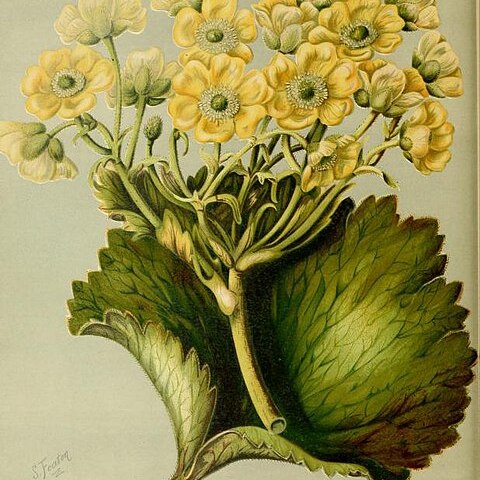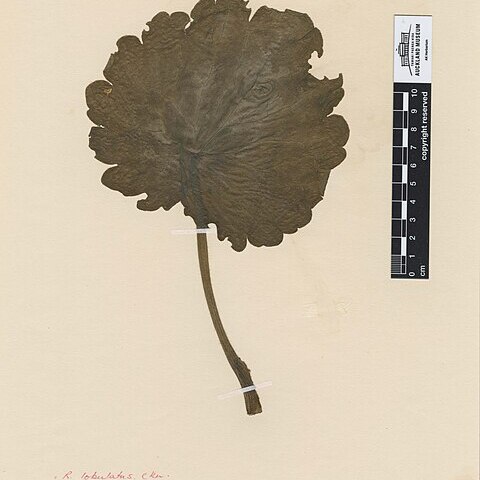Branched, us. villous, tufted herb up to 9 dm. tall, with very stout stock. Radical lvs ∞ on stout petioles 10-25 × 1 cm., with brown sheathing bases. Lamina 10-14 × 10-16 cm., coriac., us. villous, especially on under surface, dark green, rounded cordate to reniform, crenate, sts shallowly lobed, basal sinus up to 4 cm. deep. Cauline lvs similar, smaller, us. more deeply cut or lobed, lobes linear-oblong. Peduncles ∞, stout, up to 10 cm. long; bracts linear-oblong, lower with 1-2 narrow lobes, upper ± entire, c. 1 cm. long. Fls 2-5 cm. diam.; sepals 5, oblong, c. 1 cm. long, pilose on dorsal surface; petals 5-10, occ. more, obovate, emarginate, yellow, c. 2 × 1·5 cm. Nectary glands 1 or 2, basal. Fruiting heads subglobose, 1-1·5 cm. diam.; receptacle cylindric, pubescent; achenes turgid, villous, obliquely obovate, ± 2mm. long; style stout and winged below, slender above, ± 3 mm. long.
More
Tufted perennial; rhizome stout. Stems erect, villous or rarely glabrous, up to 25 cm tall. Lvs simple, often coriaceous, sometimes submembranous, crenate or toothed, hairy, rarely one or both surfaces glabrous, variable in shape from oblong-cuneate to ovate to orbicular-cordate, 3-15 × 1-20 cm. Fls (1)-2-10-(20) per stem, 2-3-(5) cm diam.; pedicels hairy or glabrous. Sepals spreading, glabrous or with silky hairs. Petals 5-7-(16), yellow, narrowly to broadly cuneate-obovate; nectary single (rarely 2-3), 1-2 mm from petal base, naked. Receptacle glabrous or hairy. Achenes numerous, not flattened, hairy or glabrous; body 1-3 mm long; beak straight or curved, 1-3 mm long.


